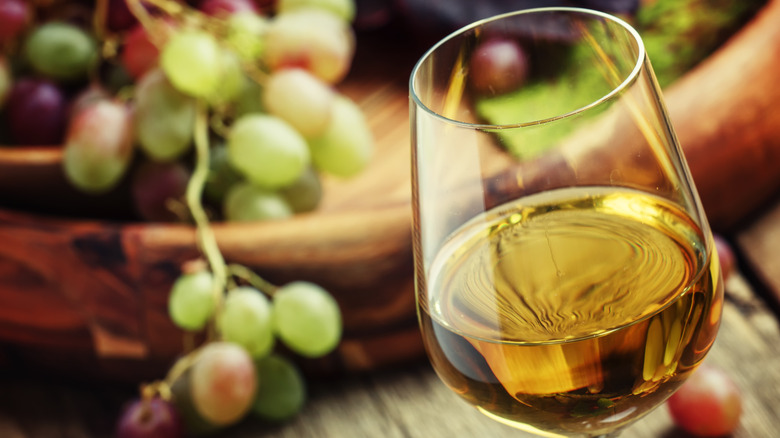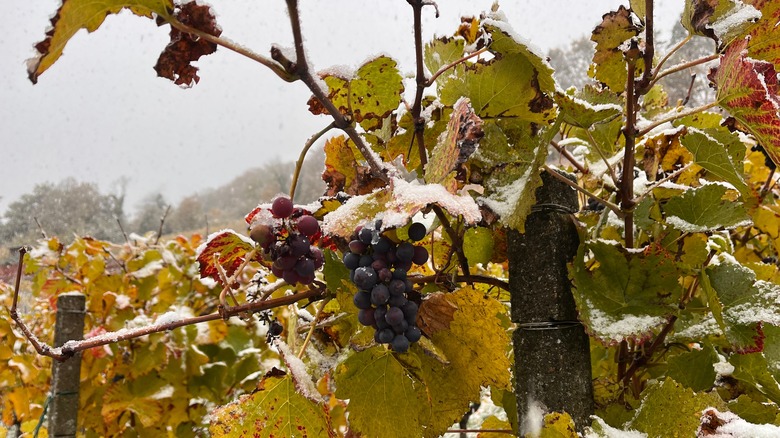The Step That Makes Ice Wine So Unique
From dry reds to sparkling whites, every wine has its own flavor profile and path from grape to bottle. Ice wine is a dessert wine with an especially unusual process, as the grapes used for ice wine undergo a unique freezing and thawing process.
Ice wine originally hails from Europe, where it is better known as eiswein in Austria and Germany. The aromatic grapes used to produce these bottles are often also used to make Riesling and Cabernet. From the moment the grapes hang from the vine to the minute you pour a well-chilled glass at home, ice wine moves to its own rhythm. Unlike in other vineyards, the grapes used for ice wine remain on the vine for quite a while and are harvested in the coldest possible temperatures. This often means they don't get picked off until the dead of night or early morning before sunrise. After the season's first deep frost and the subsequent harvest, the frozen grapes are pressed and the concentrated juice that comes from them is fermented. The high sugar content of this juice makes fermentation especially long and a process that can take months.
This specific method also comes with its own challenges. Extracting juice from the frozen grapes is difficult and usually yields very small amounts of juice. Plus, since the key to ice wine very low temperatures, all this work needs to be done quickly and in not-so-fun conditions.
What it's like to drink ice wine
Despite its categorization as a dessert drink, don't expect a creamy sip out of ice wine. The freezing and thawing process involved in its preparation separates the sugars and water in the grapes, which is why the juice is so sweet. Without engaging in the actually kind-of fun wine snob terms often heard at a vineyard, know that ice wine often has flavors of tropical fruit, honey, and citrus. It also typically brings a high level of acidity to the glass, though it shouldn't be sour (that's one of the signs of spoiled wine).
Because crafting ice wine is so labor-intensive, it's also typically considered a rare luxury. This high status coupled with the intense sweetness of the beverage means the wine is best served in small quantities. Ice wine should be served chilled at 40 to 50 degrees Farenheit and pairs well with desserts, cheeses, spicy and fatty foods. So, know that if you get your hands on a bottle, you've got a rare chilly, boozy treat to enjoy. What's more, you have deep frost-braving grape harvesters to thank for it all.

